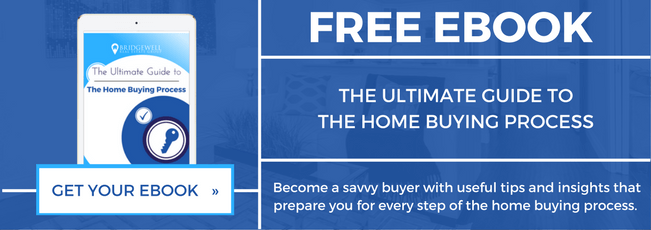What is a Special Levy?
Strata Special Assessments and How to Pick a “Good” Strata
If you’re looking to purchase a strata property (condos or townhouses), you’ve likely heard of the term special levy or special assessment.
A levy is an amount of money that the owner has to pay to help fund a shared common expense for the building or complex.
This blog goes through the basics of “what is a special levy?” and also dives deep in to how they are calculated and approved.
We tell you the documents you’ll need to find out how to avoid a special levy, and how to estimate whether or not one will be coming up in the near future.
If you’re looking to purchase a strata unit in the near future, then you’ll definitely want to read this blog for everything you need to know about special levies for strata properties!
What is a special levy?
A special levy, also known as a special assessment, is money that is paid by the owner of a strata lot to help pay for shared common expenses related to the building or complex. Therefore, this is ultimately money that comes directly out of a seller’s pocket to pay for a capital project; for example, a roof.
Strata lot owners (condo or townhouses usually) will usually see a special levy payment due when one of the following situations occur:
- there are insufficient funds in the contingency reserve fund (CRF) to cover the cost of the repair/replacement project
- a decision is made not to use money from the CRF to pay the levy
- the expenditure has not been included in the annual budget because it was either not anticipated, is infrequent, or is an emergency repair
What is a contingency reserve fund and how does it relate to special levies?
A contingency reserve fund is essentially the strata’s bank account or savings fund. This is the fund that the strata takes money out of to pay for maintenance, repairs, and upgrades.
When a budget for the strata is approved, there is also an annual contribution to the CRF that is noted. This money is taken from the maintenance fees and then contributed towards increasing the amount of savings in the CRF for future projects.
Because maintenance fees and the annual contribution to the CRF are directly related, this is one reason why paying a little more on a monthly basis can be better for you in the long run. Your building or complex will have a better ability to perform regular maintenance, and will likely have more money to contribute towards big repairs – lowering your chance of a large out-of-pocket levy. Typically, the larger the CRF, the less likelihood there will be of a major special levy.
What documents can I look at relating to special levies?
FORM B
The Form B is a document that contains a variety of information, but with relation to special levies and contributions, the following are the most relevant:
Maintenance fee line – tells you what the current approved maintenance fee is so you know what you’ll be paying on a monthly basis
Contingency reserve fund line – tells you how much is currently in the contingency reserve fund so you can cross reference it with the depreciation report
Special levies approved and due line – tells you if there are any special levies currently approved, so you can obtain information on what the required repair is and make it clear that the owner is responsible for those levies prior to or upon the completion date.
DEPRECIATION REPORT
The depreciation report is an excellent estimate for what the future of the building is going to look like, and how the strata is expected to fund capital projects. A depreciation report typically outlines the key components of the building, the current age of them, the estimated life expectancy, and the cost of replacement. The engineers then cross reference this with the CRF and come up with different funding models for the building or complex, with recommendations on how to be in good standing financially based on the expected repairs and replacements.
These reports offer different funding models, such as:
- what the financials and special levy schedule will look like if the strata continues to use the current funding model and contributions
- what the financials and funding contributions will have to increase to in order to completely avoid special levies (usually an extreme high for maintenance fees & contributions)
- what the financials and funding contributions will have to increase to in order to minimize special levies or create a balance between higher contributions and reasonable levies
Keep in mind that the depreciation report is a guideline, and that the depreciation report assumes that every component only lasts for the average life expectancy (it could be longer, it could be shorter). The strata is not required to choose an exact funding model from the report, and may choose a hybrid model.
FINANCIALS (associated Form B document)
You’ll want to check the financials, which is usually included in the most recent annual general meeting or Form B document, to see how much the annual contribution to the CRF is. By cross referencing this with the depreciation report, you’ll be able to determine which funding model the strata is best trying to follow, and estimate a special levy schedule from there.
PROPERTY DISCLOSURE STATEMENT (PDS)
The PDS for strata properties has a question relating to the history of special levies in the building. The seller is asked to answer the last 5 years of special levies, and whether there are any special levies currently approved. The key question here is the history of special levies – as you’ll already be able to obtain up to date information on approved levies via the Form B. If the strata has issued a levy every year for the last 5 years, you’ll have a pretty good idea for what the horizon looks like. (hint: it’s not going to be good) Alternatively, if there was a large project that was a one time fee, it’s important that you keep up to date with what’s been done to the building and how much was paid.
How are special levies approved?
Special levies are presented at an annual general meeting or a special general meeting, and require a ¾ vote in order to approve the levy if contributions are made based on the same way as strata fees, typically unit entitlement. Special levies are based on unit entitlement, which means that not every unit will pay the same special levy. Rather, a smaller unit will pay a lesser special levy than a larger unit because they are entitled to less space.
The strata council will present typically present one to three options for the special levy, in which the owners will vote for which option(s) will be carried or denied.
Examples of this may be:
For the replacement of a roof, special levy calculated by unit entitlement:
- Raising $500,000 entirely by form of special levy paid in 3 instalments on September 1st, December 1st, and March 1st.
- Taking $300,000 out of the CRF, and raising $200,000 by form of special levy due in full on December 1st.
- Taking $100,000 out of the CRF, and raising $400,000 by form of special levy paid in monthly instalments until complete in the amount of $300/month.
With levy approvals, notices of the meeting with the options are typically given out prior to the meeting so that the owners can consider their options.
A resolution approving a special levy must state:
- the purpose of the levy
- the total amount of the levy
- the method for determining each strata lot’s share of the levy
- the amount each strata lot must pay and
- the date(s) by which the levy must be paid
Strata properties are complex… use a realtor that is familiar with strata properties
Strata properties are a COMPLETELY different ball game than single-family homes. Strata documents are no joke, and there’s a reason why a lot of realtors choose not to deal with condos and townhouses – it’s a lot of reading and expertise!! There are often hundreds of pages of documents to decipher, and if your realtor isn’t familiar with what to look for then you could be on the hook for buying in to a bad building.
If you’re looking for a realtor that is familiar with strata properties to help you purchase, then reach out to our team – I’m the Bridgewell strata specialist! I’m here to help you with everything from bylaws to depreciation reports to meeting minutes and in between.
—
If you’re looking to hire a realtor with experience to help guide you through the process of buying a home, then reach out to us today at [email protected] or 604-319-2020 for realtor representation!




